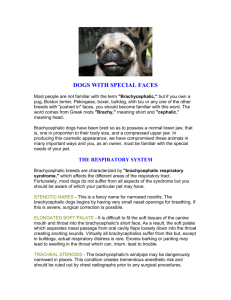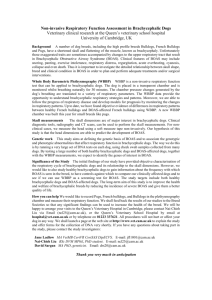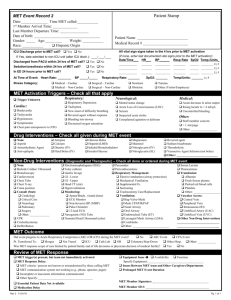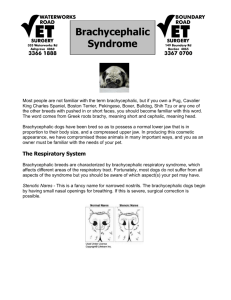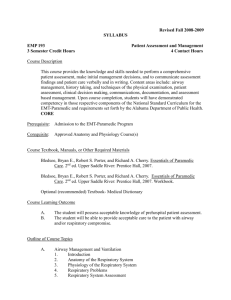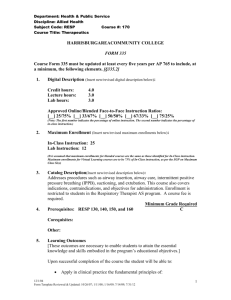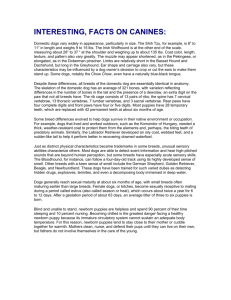Brachycephalic Syndrome - Abbott Animal Hospital
advertisement
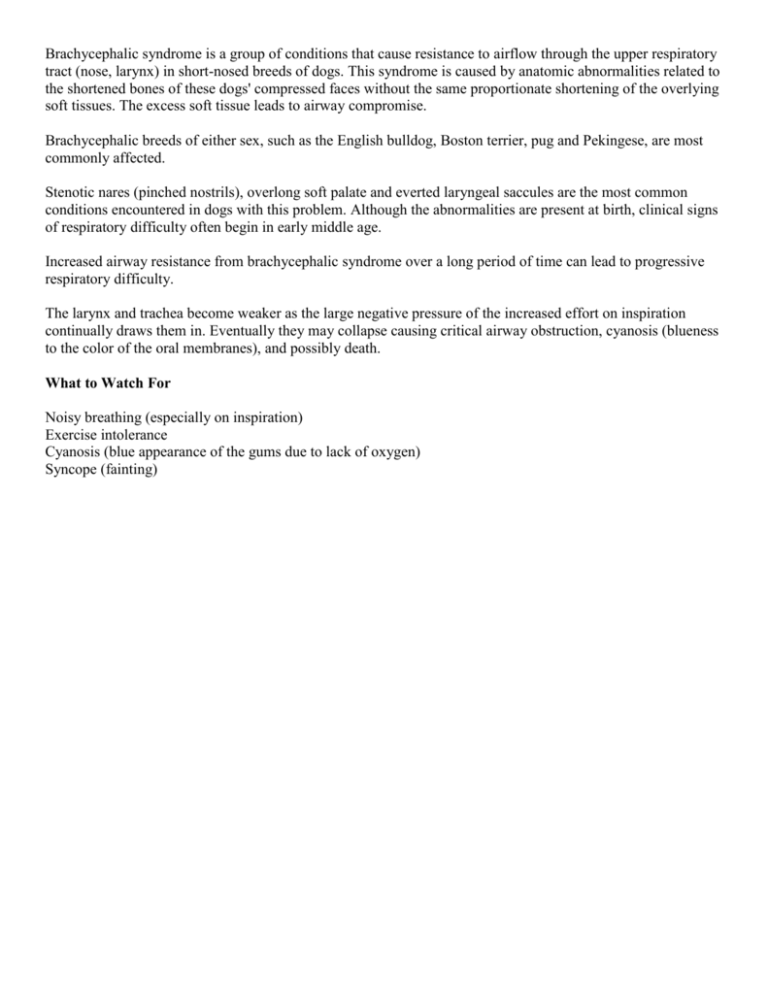
Brachycephalic syndrome is a group of conditions that cause resistance to airflow through the upper respiratory tract (nose, larynx) in short-nosed breeds of dogs. This syndrome is caused by anatomic abnormalities related to the shortened bones of these dogs' compressed faces without the same proportionate shortening of the overlying soft tissues. The excess soft tissue leads to airway compromise. Brachycephalic breeds of either sex, such as the English bulldog, Boston terrier, pug and Pekingese, are most commonly affected. Stenotic nares (pinched nostrils), overlong soft palate and everted laryngeal saccules are the most common conditions encountered in dogs with this problem. Although the abnormalities are present at birth, clinical signs of respiratory difficulty often begin in early middle age. Increased airway resistance from brachycephalic syndrome over a long period of time can lead to progressive respiratory difficulty. The larynx and trachea become weaker as the large negative pressure of the increased effort on inspiration continually draws them in. Eventually they may collapse causing critical airway obstruction, cyanosis (blueness to the color of the oral membranes), and possibly death. What to Watch For Noisy breathing (especially on inspiration) Exercise intolerance Cyanosis (blue appearance of the gums due to lack of oxygen) Syncope (fainting)
